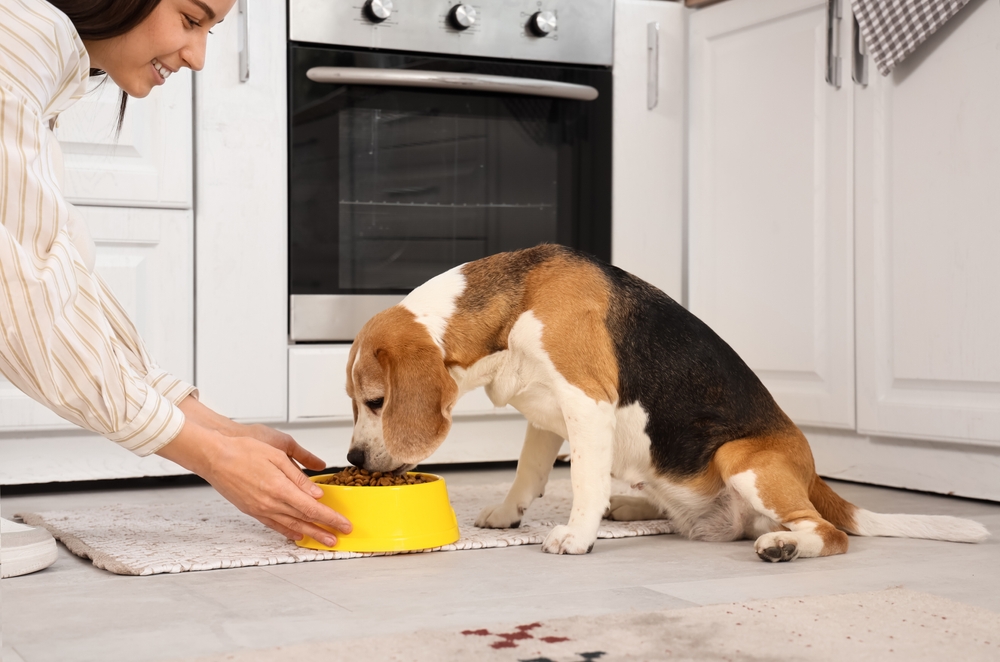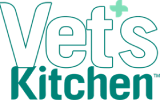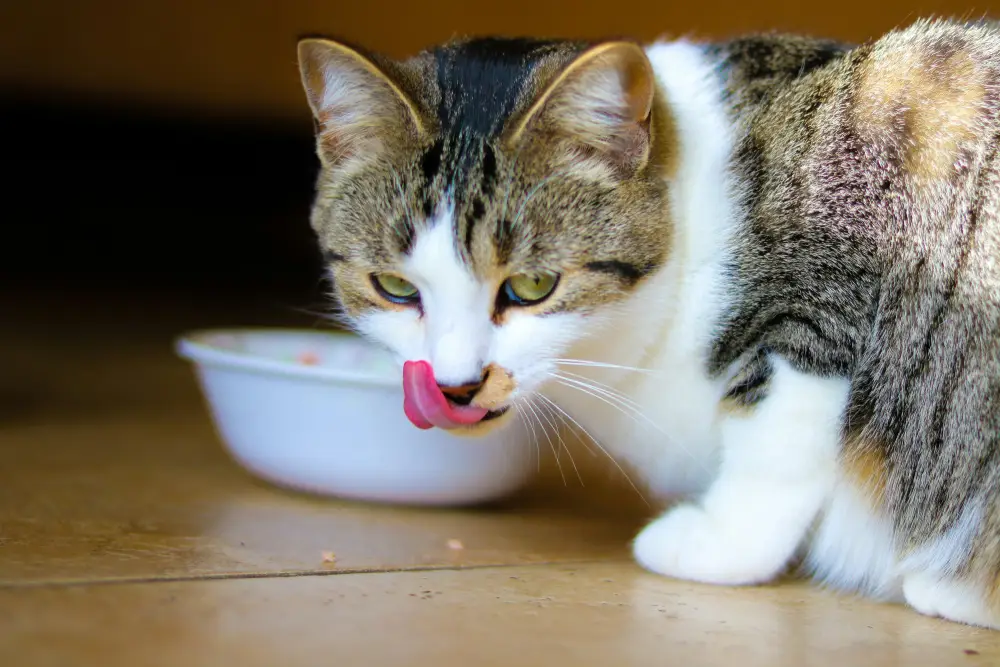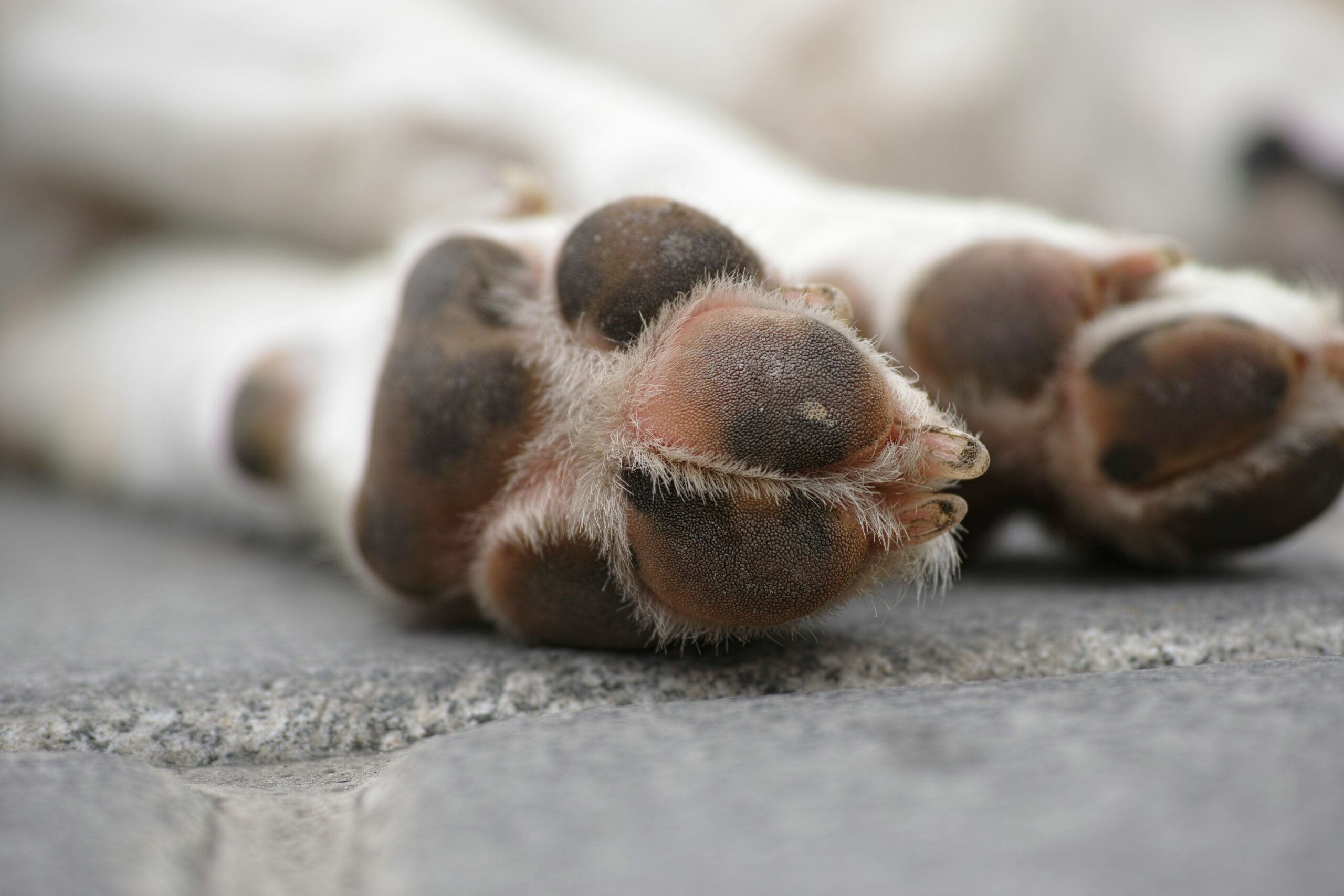
How many times a day should I feed my dog?
August 3rd 2022
There is an abundance of internet advice on how many meals per day your dog should have, but in most cases, there simply isn’t enough research available to provide a definitive answer. The number of meals you should feed per day will usually depend on personal preference and will vary depending on your lifestyle and your dog’s breed, age, and health status.
In this blog, we’re going to explore the facts behind meal feeding and discuss the most appropriate options for different dogs.
Once daily feeding
A recent scientific paper[i] published in 2022, suggested that dogs fed only once a day were healthier than dogs fed more frequently. However, there were limitations to this research. Firstly, the data collected was done via a survey which the owners filled out. The health of the dog was never verified by a vet. Secondly, it did not state whether the owners that fed several meals a day started doing so because their dog developed a health problem. In other words, the dogs could have been fed once a day, become sick and then the owners started feeding several meals per day to try and manage the condition. When surveyed this would only state that sick dogs were eating multiple meals. And thirdly, the survey did not look at the weight of the dogs. Being overweight is a risk factor for many disease conditions. It is possible that dogs fed only once a day consumed less calories and were healthier due to this, rather than the actual number of meals they ate. Therefore, more research is needed on this.
Breed risk
The breed of your dog may be a factor in how many meals per day you should feed. Breeds prone to bloat or gastric dilation volvulus (GDV) tend to be large or giant deep chested breeds. One study[ii] showed that feeding a large volume of food once a day increased the risk of GDV by 3 times compared to feeding twice daily.
Smaller dog breeds tend to have a faster metabolism than larger breeds and therefore may do better on 3 meals rather than 2 meals, but it depends on the individual dog.
Hungry or Fussy dogs
Anecdotally, fussy dogs may prefer to eat just once a day and will have more of an appetite if they wait for their food, however there are no studies to support this.
A small study[iii] presented at the Companion Animal Nutrition Conference in 2020 showed that dogs fed once a day were less satiated than dogs fed twice-daily.
Behaviour
Many behaviourists and dog trainers believe dogs fed more than once a day show better behaviour, but this hasn’t been substantiated. If you are working to improve your dog’s behaviour, then changing the number of meals might be something to explore.
Puppies
Like human babies it is recommended that puppies eat smaller more frequent meals. This is because they need to eat a large volume of calories for growth, but they have a small stomach capacity. However, there is no research to recommend exactly how many times you should feed. As a rough guide it is usually recommended that you feed 3-4 meals a day until they are about 12 weeks old, then 3 meals per day until 6 months old, after which you can carry on with 3 meals or you can start to wean out the middle meal and just feed twice per day.
Nursing bitches
Pregnant and lactating bitches require large amounts of calories during the last three weeks of pregnancy and whilst nursing their puppies. Free feeding or multiple meals are recommended so that you are not trying to encourage them to eat one huge meal, especially as the growing puppies can reduce the abdominal space leaving less room for the stomach to expand.
Senior dogs
Senior dogs may lose their appetite because they are not as active or due to other reasons such as dental pain or organ decline. With these dogs, if they only eat a mouthful or two at a time, multiple meals may allow you to get more nutrition into them than offering one big meal.
Dogs with health conditions
For certain health conditions different feeding regimes are sometimes recommended. For example, for diabetic dogs, food must be taken with insulin and as insulin is usually injected twice a day, these dogs should be fed two meals. For liver disease, it has been recommended that the dog is fed small frequent meals, however this is based on studies in humans that show multiple small meals can help control the nitrogen balance[iv].
Bilious vomiting syndrome
This syndrome is characterised by the dog vomiting up yellow-green bile and mucus in the early morning. It is a poorly understood condition but seems to occur on an empty stomach – it is therefore also called ‘hunger pukes’. Many vets recommend feeding a meal or snack right before bedtime and first thing in the morning to help manage this condition. These dogs are unlikely to do well on just one meal per day.
In summary…
There are actually very few studies looking at the benefits of different feeding methods in dogs. In most cases, how many meals you should feed per day will depend on your individual dog, their age, breed and how greedy or fussy they tend to be. The most important factor is the amount of food they consume in a day, not the number of meals.
If you’re still unsure how many times a day to feed, we’ve put together this chart to help:
|
Age or condition of dog |
Suggested number of meals |
|
8-12 week old puppy |
4 meals per day |
|
12 weeks – 6 month puppy |
3 meals per day |
|
6 months + puppy |
2-3 meals per day |
|
Adult dog (healthy) |
1-3 meals per day – personal preference |
|
Adult dog fussy |
1 meal per day |
|
Adult dog hungry |
2-3 meals per day |
|
Adult dog prone to GDV bloat |
2+ meals per day |
|
Senior dog |
2-3 meals per day |
|
Dog with health condition |
Depends on condition – see your vet |
[i] Bray, E.E., Zheng, Z., Tolbert, M.K., McCoy, B.M., Kaeberlein, M., Kerr, K.F. & Dog Aging Project Consortium 2022, “Once-daily feeding is associated with better health in companion dogs: results from the Dog Aging Project”, GeroScience, vol. 44, no. 3, pp. 1779-1790.
[ii] Raghavan, M., Glickman, N., McCabe, G., Lantz, G. & Glickman, L.T. 2004, “Diet-Related Risk Factors for Gastric Dilatation-Volvulus in Dogs of High-Risk Breeds”, The Journal of the American Animal Hospital Association, vol. 40, no. 3, pp. 192-203.
[iii] Hunt, B.,Moxon, R., James, E., Howson, R., Asher, L., Warner, C., England, G., (2020). Companion Animal Nutrition Conference, 2020. ‘Effect of Feeding Practices on Defecation and Satiety Behaviours in Dogs’. University of Nottingham. [Abstract].
[iv] Grant, C.E., Dodd, S., Abood, S.K. & Verbrugghe, A. 2021, Commercial diet recommendations and follow-up for a large breed puppy with an intrahepatic portosystemic shunt.

 Shop Dog
Shop Dog
 Shop Cat
Shop Cat
 Vet Know-how
Vet Know-how Contact
Contact


